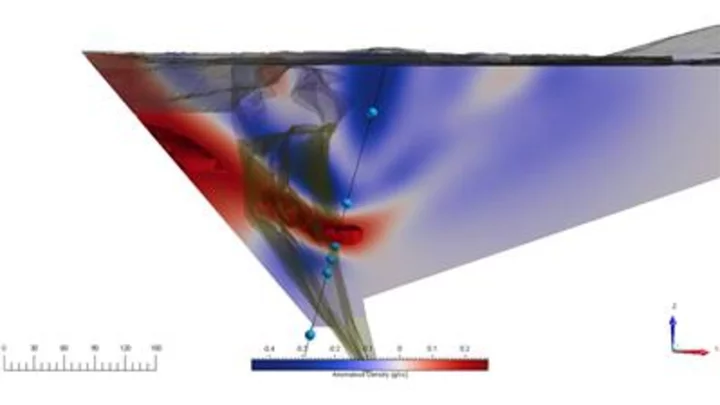Scientists have homed in on a popular cosmic object, and are now seeing it in a whole new neon light.
The Ring Nebula, also called Messier 57, is a cloud of gas and dust shed from a dying star about 2,600 light-years away in the constellation Lyra. This mesmerizing, glowing eye imaged by the James Webb Space Telescope continues to confound astronomers: How could a single star make such a complex structure, with an array of hundreds of mysterious stripes?
The telescope, the leading space observatory of NASA and the European and Canadian space agencies, is focusing on the nebula to try to make sense of these lines and tens of thousands of surrounding hydrogen clumps. They're the result of a complicated dance of physics that is not well understood.
"These images hold more than just aesthetic appeal," said Nick Cox, co-lead scientist on the project from the French space company ACRI-ST, in a statement. "They provide a wealth of scientific insights into the processes of stellar evolution."
SEE ALSO: Spectacular Webb telescope image shows a stellar death like never beforeBy studying the nebula, scientists hope to gain more insight into the life cycles of stars and the elements they release into the universe.
The new infrared Webb images, shown in false colors of violet and lime to make them more discernible, display a main ring, surrounded by a fainter halo with delicate features. Within the ring is a hot pool of gas. The central star is burning at over 180,000 degrees Fahrenheit.
Unlike giant stars that explode into a supernova and collapse into a black hole, a medium star like the one creating this nebula runs out of nuclear fuel and suffers a more tortured end. As it withers, it sloughs off its outermost layers until all that's left is a white dwarf of carbon and oxygen. That pit eventually grows cold and no longer makes light. For the Ring Nebula, this began about 4,000 years ago.
The brightest star in this close-up image is the central star creating this nebula, with a temperature over 180,000 degrees Fahrenheit. Credit: NASA / ESA / CSAIts story foretells what's to come for our own medium star — the sun — which is expected to die in the same fashion some 5 billion years from now.
Want more science and tech news delivered straight to your inbox? Sign up for Mashable's Light Speed newsletter today.
Scientists are studying the Ring Nebula to try to make sense of tens of thousands of surrounding hydrogen clumps. Credit: NASA / ESA / CSAThe released outer layers of the dying star carry metals through space. As they collide with other particles, they'll make new molecules and begin forging new objects in the cosmos. Stars are element factories: They make carbon, for instance, the same chemical on which humans and much of life on Earth are based, then cast these ingredients into the universe upon their death.
"This is the end for the star," said Klaus Pontoppidan, an astronomer at the Space Telescope Science Institute in Baltimore, while explaining another such stellar death. "But it's the beginning for other stars and for other planetary systems."
How could a single star make such a complex structure, with an array of hundreds of mysterious stripes? Credit: NASA / ESA / CSAWhat makes the Ring Nebula and other so-called "planetary" nebulas (a confusing misnomer because they don't have anything to do with planets) so alluring for stargazers are their shapes and sizes that vary like fingerprints and snowflakes. They often have glowing hoops, giant bubbles or pools, and cloud tendrils.
The new images reveal the intricate details of the nebula's expanding shell and the area surrounding the dying star. The international team working on the new images was amazed by Webb's clarity, topping previous views of the object, said Albert Zijlstra, an astrophysicist at the University of Manchester.
“We always knew planetary nebulae were pretty," he said in a statement. "What we see now is spectacular.”









